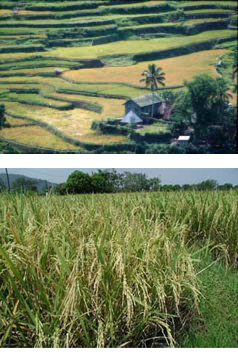The Three Roles of Rice Research in Development
 What factors influence economic development?
What factors influence economic development?
Many factors contribute to economic development including: Political stability, capital formation, openness to market competition, infrastructure, education and health (human capital), access to credit and technology development and dissemination.
Is rice research still important?
Rice remains a critical part of Asian society and culture. Rice is the principal agricultural activity in most countries in South and Southeast Asia, and major source of employment and income. Rice production has been increasing to meet the staple food needs of the growing population in most countries of Asia and parts of Africa. However, with the lowering of rice prices in the world market, there is a growing perception that the problems of food security have been solved particularly in Asia and that there is no longer a need for rice research. This fact sheet outlines how research, and more specifically research in rice helps fuel economic development.
What are the three roles that make rice research important for development?
Rice research remains essential for development because of:
- Productivity growth: Economic growth depends on increases in productivity (i.e., output per unit scarce inputs) and improvement in efficiency (reduction in costs per unit of output) across the entire economy. Thus growth of an economy as a whole depends on the growth of its individual components. Since rice is a major component of all economies in Asia, it means that productivity gains in rice will make contributions to increased competitiveness in rice production and to overall economic development.
Fact 1: Average yields in Asia have doubled and the cost per unit of output has declined by almost 25% over the last 40 years. Research has driven this increase in productivity and efficiency. - The Environment: Without the impressive growth in land productivity, people would have been forced to further extend cultivation to marginal lands, thus aggravating the problem of how to sustain the natural resource base. Similarly increased productivity of water and chemical fertilizers are needed to address the issue of looming water crisis and farmers' dependence on harmful agro-chemicals.
Fact 2: Rice covers around 30% of cultivated land in Asia (over 137 million ha). About 94% of the fresh water withdrawal in South Asia and 81% in East Asia and Pacific is used for agriculture, mostly for rice cultivation. - Food prices: Over 2.7 billion people depend on rice as their major source of food. Of these 1.1 billion are defined as poor with an income of less than one dollar a day. Two thirds of them live in Asia. These rural and urban poor spend as much as 20−40% of their income on rice. Increases in productivity keep rice prices low and affordable for the vast number of rural and urban poor.
Fact 3: World rice prices are now one quarter of what they were just 20 years ago - in large part due to advances in rice technology through research.







